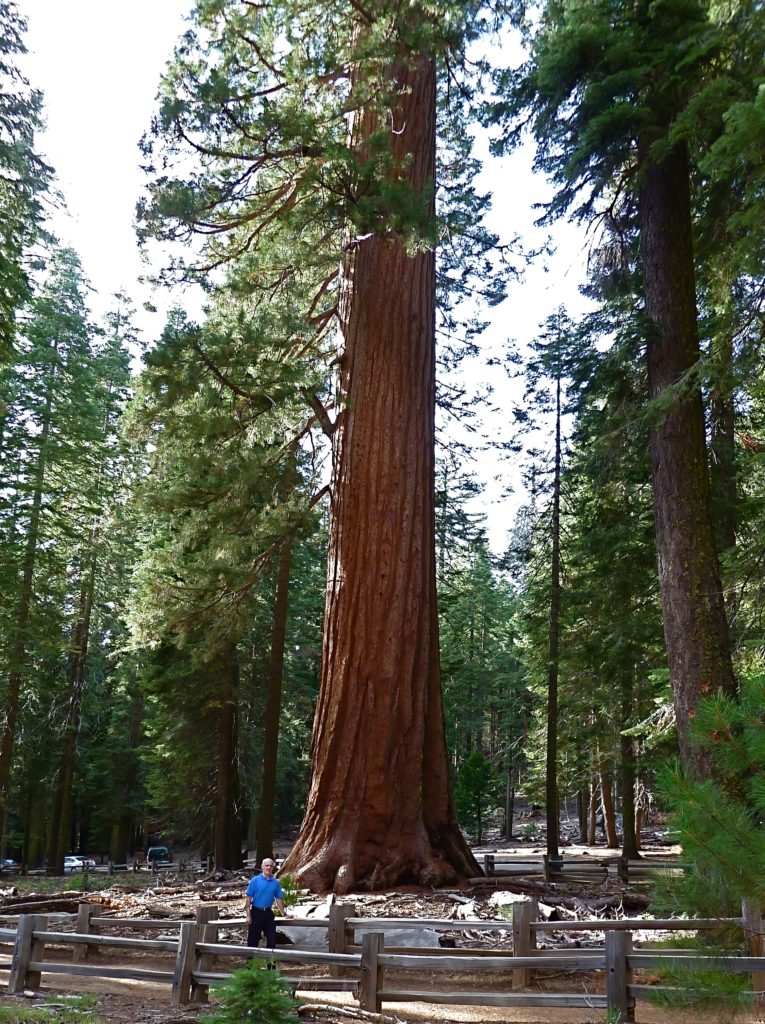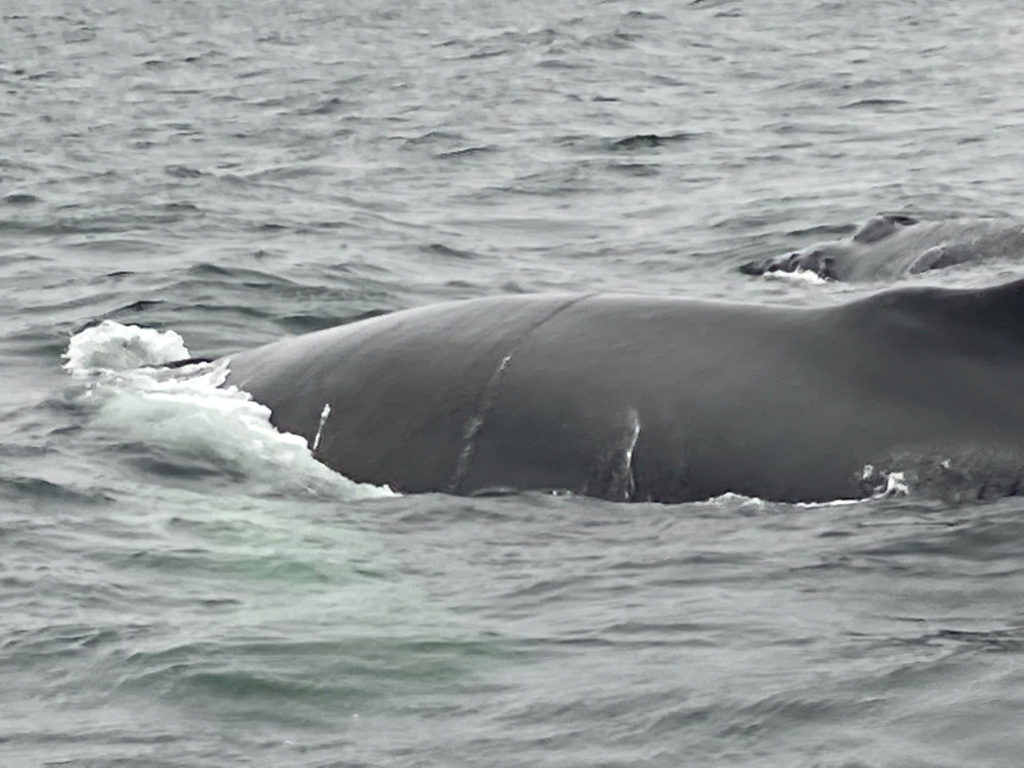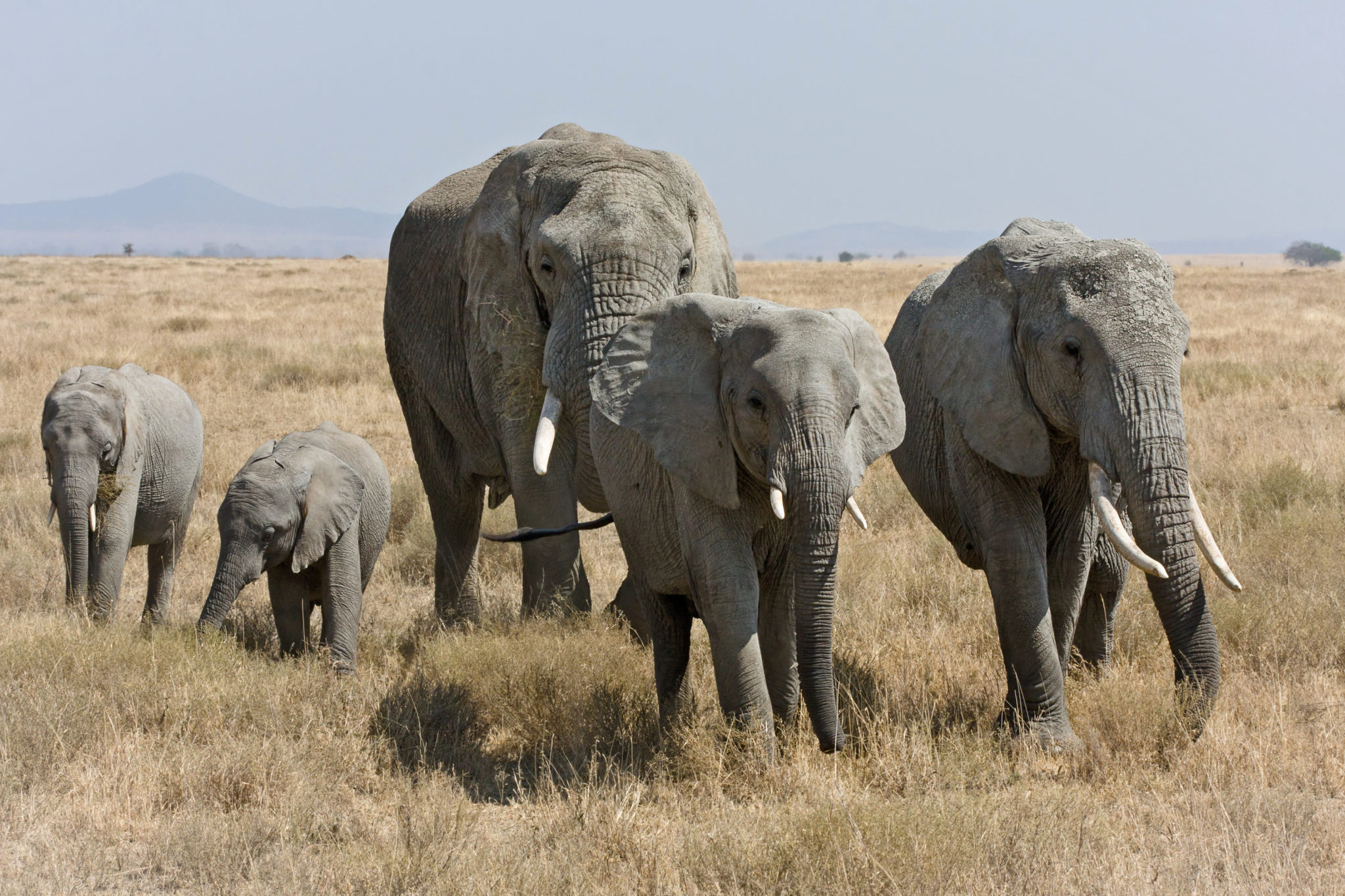Largest Plants and Animals Are Designed to Benefit All Life
A visit to a national park or nature reserve wouldn’t be complete without animal sightings—and the bigger, the better. It’s a joy to experience the largest animals, trees, and even whales in their habitats. Human fascination with the largest animals and trees often leads to conservation efforts. New research shows that by helping to preserve the largest body-sized biota, we discover how they’ve been designed to benefit all ecosystems.
A Diverse Creation
Two of the most conspicuous features of Earth’s life are the enormity of the total biomass and the stupendous range of diversity in the body sizes of organisms. These features appear across the spectrum of microorganisms, plants, and animals. The fact that Earth is packed with such life resonates with the primary theme of Psalm 104, the longest of the creation psalms. Several verses in Psalm 104 speak of how God created life-forms to fill every niche of Earth’s continents and oceans with the maximum conceivable abundance and diversity of life. Two in particular are Psalm 104:24–25:
How many are your works, O Lord! In wisdom you made them all; the earth is full of your creatures. There is the sea, vast and spacious, teeming with creatures beyond number—living things both large and small.
Megabiota draw the most attention from humans. Scientists coined the term megabiota to refer collectively to Earth’s largest plants (megaflora) and animals (megafauna).
There is a paradox in the attention humans pay to megabiota. On the one hand, there is something enchanting about megabiota. Humans will flock from all over the world to see (up close) and spend time with the world’s largest trees, such as California’s redwoods and giant sequoias (see figure 1), and with the world’s largest animals, such as whales, elephants, and rhinos (see figure 2). Our captivation has led to a strong desire to preserve and protect the megabiota species.
On the other hand, human activity—clearing of land for agriculture, industry, and cities, hunting, overfishing, selective logging, landscape restructuring, fragmentation, and human conflicts—has had a devastating impact on Earth’s megabiota. It began with the launch of neolithic civilization 15,000–10,000 years ago when several megafauna species were driven to extinction.1 Today, in spite of worldwide conservation efforts many megabiota species are in danger of rapid extinction.2

Figure 1: The Largest Known Single-Stem Living Tree on Earth
The General Sherman Tree in California has a trunk diameter of 36 feet and a trunk volume of 52,000 cubic feet. I am in the foreground about 50 feet in front of the giant sequoia. Credit: Kathy Ross

Figure 2: Two 60-Foot-Long, 40-Ton Humpback Whales
Credit: Hugh Ross
Anticipated Biosphere Losses and Gains
A team of five ecologists and computational biologists, led by Brian Enquist, produced sophisticated global simulation computer models to determine what impact the extinctions of the largest plants and animals would have on Earth’s total biomass and biodiversity.3 The researchers applied metabolic scaling theory in their simulations. This theory seeks to understand the relationship between an organism’s metabolic rate and its size. Enquist’s team defined megabiota as including herbivore animals with average adult body sizes greater than 100 kilograms (220 pounds), carnivore animals with average adult body sizes greater than 15 kilograms (33 pounds), and trees with mature trunk diameters greater than 60 centimeters (2 feet).
The team first demonstrated that any one of the following three factors will inevitably result in more megabiota extinctions:
1. additional clearing of land for human use;
2. increased hunting activity; and
3. increased global warming.
Furthermore, they showed that these added extinctions will happen sooner rather than later.
Second, Enquist’s team showed that even a small number of megabiota extinctions will produce major negative impacts on ecosystem metabolism and functioning. Their application of metabolic scaling theory showed that the total energy flux through all plants scales (increases) with the size of the largest trees. In their words, “vegetation that contains larger individuals will disproportionately absorb and store more carbon and cycle more water and nutrients and in turn produce more biomass.”4
Enquist and his colleagues also showed that the “diffusion of nutrients across the landscape by herbivores via defecation and urination scales positively with the size of the largest herbivore.”5 This conclusion is especially evident in the distribution of soil phosphorus. For example, the reduction in the size range of animals in the Amazon since the end of the Pleistocene 12,000 years ago led to a reduction in soil phosphorus concentrations that lowered the fertility for the entire Amazon ecosystem.
To more quantitatively understand how reductions of the largest animals impact ecosystems, Enquist’s team developed a general ecosystem model (GEM) that took into account—on a global scale—complex ecological interaction networks and whole-ecosystem dynamics. They produced three specific simulations of Earth’s ecosystems:
1. The late Pleistocene world where the largest terrestrial wild animal body size is typically 10,000 kilograms;
2. The modern world where the largest terrestrial wild animal body size is typically 1,000 kilograms; and
3. The future world where the largest terrestrial wild animal body size is typically 100 kilograms.
The group determined that the future world contained 44.1% less biosphere biomass than the late Pleistocene world. They calculated that the greatest impact is on ecosystem nutrient diffusivity (fertilization). There, the future world is 92.4% less fertile than the late Pleistocene world. The least loss occurs for the total metabolism level for terrestrial life. This loss is still a very significant 18%.
Megabiota Biosphere Roles
Thanks to the five researchers, it is now evident that biosphere functioning and the well-being of smaller organisms rely disproportionately on the largest animals and trees. A biosphere with larger trees and animals is more productive and more fertile and contains a greater biomass. It is also clear that a biosphere with megabiota is more buffered and resilient to ecosystem disturbances. Megabiota make greater biodiversity possible, which, in turn, lowers the extinction risk of all species. For humans, megabiota enhancement results in boosts to the general economy and public health.
Enquist and his colleagues have provided us with additional strong incentives to preserve and enhance Earth’s population of the largest wild trees and animals. They show that we need to do more than just set aside a few national parks and nature reserves where tourists can come and see these charismatic creatures. We need to ensure robust population and diversity levels of megabiota in all ecosystems.
Evidence for Design and Creation
Because of their enormous body sizes, megabiota are the most subject to extinction. Compared to smaller organisms, megabiota have lower population levels, longer times between birth and capacity to reproduce, and fewer progeny per adult. They are also much more likely to be killed by natural events such as droughts, floods, lightning strikes, wildfires, cyclones, and climate change. Therefore, compared to smaller organisms, megabiota possess much lower capacities to adapt to environmental changes and much lower possibilities of evolutionary change.
In the case of mammals, the most captivating of megabiota, a previous study established that large body-sized mammals accumulate deleterious mutations at a rate far greater than any other life-forms.6 Another study showed that terrestrial mammals with an adult body size greater than 3 kilograms, under nearly all conceivable environmental conditions, will go extinct before they can evolve into a distinctly different mammal.7 This study was affirmed by a later, more extensive study.8
This combination of studies demonstrates that large-bodied terrestrial mammals cannot be the product of natural evolution. They must be created and designed by God to maximally benefit human beings and Earth’s ecosystems. By working to preserve their existence, we show respect for their Creator and enhance their lives and ours.
Endnotes
- David A. Burney and Timothy F. Flannery, “Fifty Millennia of Catastrophic Extinctions After Human Contact,” Trends in Ecology and Evolution 20, no. 7 (July 2005): 395–401, doi:10.1016/j.tree.2005.04.022; Felisa A. Smith et al., “Body Size Downgrading of Mammals over the Late Quaternary,” Science 360, no. 6386 (April 20, 2018): 310–313, doi:10.1126/science.aao5987.
- Franck Courchamp et al., “The Paradoxical Extinction of the Most Charismatic Animals,” PLoS Biology 16, no. 4 (April 12, 2018): id. 32003997, doi:10.1371/journal.pbio.2003997.
- Brian J. Enquist et al., “The Megabiota Are Disproportionately Important for Biosphere Functioning,” Nature Communications 11 (February 4, 2020): id. 699, doi:10.1038/s41467-020-14369-y.
- Enquist et al., “Megabiota,” 5.
- Enquist et al., 5.
- Konstantin Popadin et al., “Accumulation of Slightly Deleterious Mutations in Mitochondrial Protein-Coding Genes of Large Versus Small Mammals,” Proceedings of the National Academy of Sciences USA 104, no. 33 (August 14, 2007): 13390–13395, doi:10.1073/pnas.0701256104.
- Marcel Cardillo et al., “Multiple Causes of High Extinction Risk in Large Mammal Species,” Science 309, no. 5738 (August 19, 2005): 1239–1241, doi:10.1126/science.1116030.
- William J. Ripple et al., “Extinction Risk Is Most Acute for the World’s Largest and Smallest Vertebrates,” Proceedings of the National Academy of Sciences USA 114, no. 40 (October 3, 2017): 10678–10683, doi:10.1073/pnas.1702078114.





